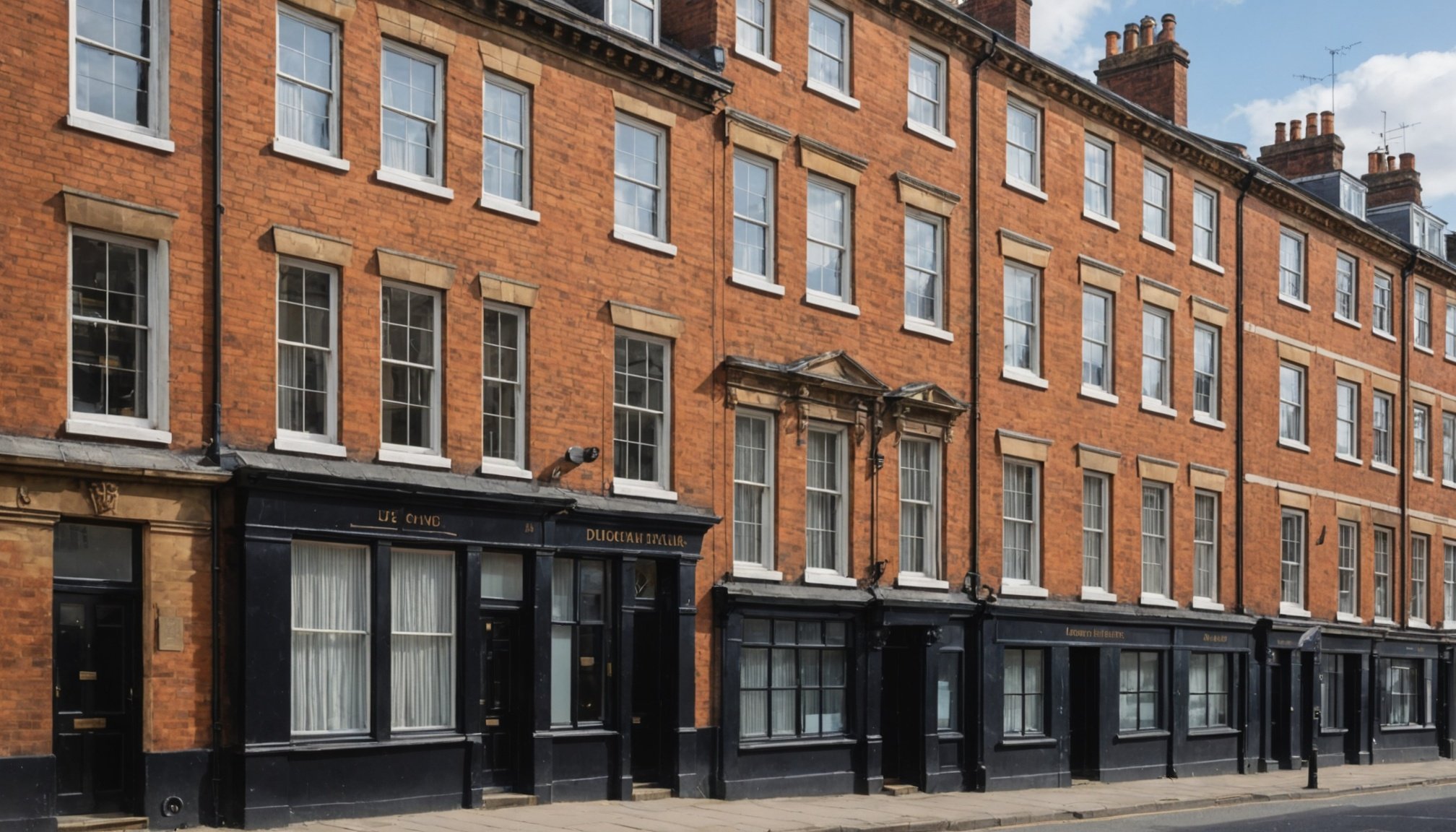Unlocking Historical Preservation Funds: A Guide to Assessing UK Property Eligibility and the Application Process
Understanding the Importance of Heritage Preservation
When it comes to preserving the rich historical heritage of the UK, the role of funding cannot be overstated. Historic buildings and sites are not just relics of the past but also vibrant components of the present and future, contributing to the cultural, social, and economic fabric of local communities. The UK government, along with various organizations and charities, offers several funding avenues to support the conservation and restoration of these heritage assets.
Assessing Property Eligibility
Before diving into the application process, it’s crucial to determine whether your property qualifies for historical preservation funds. Here are some key factors to consider:
In the same genre : Step-by-Step Guide: Transforming a UK Barn into a Cozy Home Under the Latest Regulations
Listed Buildings and Historic Designations
Properties that are listed by Historic England or have other historic designations are often eligible for funding. Listed buildings are categorized into three grades:
- Grade I: Buildings of exceptional interest, sometimes considered to be internationally important.
- *Grade II:** Particularly important buildings of more than special interest.
- Grade II: Buildings of special interest, warranting every effort to preserve them.
Local and National Planning Policies
Understanding local and national planning policies is vital. The National Planning Policy Framework (NPPF) sets out the government’s planning policies for England, including the protection of heritage assets. Local planning authorities also have their own policies and guidelines that must be adhered to.
In the same genre : Step-by-Step Guide: Transforming a UK Barn into a Cozy Home Under the Latest Regulations
Green Belt and Conservation Areas
Properties located within green belts or conservation areas may have additional restrictions but can also be eligible for specific grants aimed at preserving these areas.
The Application Process
Applying for historical preservation funds involves several steps, each requiring careful attention to detail.
Step 1: Research Available Grants
There are various grants available, each with its own criteria and deadlines. Here are a few notable ones:
- National Lottery Heritage Fund: This fund supports a wide range of heritage projects, from restoring historic buildings to creating new community facilities.
- Historic England Grants: Historic England offers grants for the repair and conservation of listed buildings and other heritage assets.
- Local Authority Grants: Many local authorities have their own grants programs for heritage conservation.
Step 2: Prepare Your Application
A strong application requires thorough preparation. Here are some key elements to include:
- Detailed Project Plan: Outline the scope of the project, including timelines, budgets, and expected outcomes.
- Heritage Significance: Explain the historical significance of the property and why it is important to preserve.
- Conservation Plan: Provide a detailed conservation plan that aligns with the principles of good conservation practice.
- Budget and Funding: Detail your budget and how the grant will be used.
### Example of a Detailed Project Plan
- **Project Title:** Restoration of the 18th Century Manor House
- **Location:** Rural area in England
- **Project Scope:**
- Repair of the roof and walls
- Restoration of original windows and doors
- Conservation of internal features such as plasterwork and flooring
- **Timeline:**
- Month 1-3: Planning and preparation
- Month 4-6: Roof repairs
- Month 7-9: Wall repairs and window restoration
- Month 10-12: Internal conservation work
- **Budget:**
- Total budget: £500,000
- Grant requested: £200,000
- Other funding sources: Private donations, local authority grants
Step 3: Submit Your Application
Ensure all documentation is complete and submitted before the deadline. Here are some tips:
- Check Deadlines: Deadlines for applications can be strict, so plan ahead.
- Follow Guidelines: Adhere strictly to the application guidelines provided by the funding body.
- Seek Professional Advice: If necessary, consult with conservation architects, heritage consultants, or other professionals to strengthen your application.
Working with Planning Authorities
Planning authorities play a crucial role in the preservation of historic buildings. Here’s how to effectively work with them:
Understanding Planning Policy
Familiarize yourself with both national and local planning policies. The NPPF emphasizes the importance of conserving heritage assets, but local policies can provide more specific guidance.
Obtaining Planning Permission
For any significant work on a listed building or within a conservation area, you will need to obtain planning permission. This involves submitting detailed plans and justifications for the work.
### Example of Planning Permission Requirements
- **Application Form:** Complete the standard planning application form.
- **Supporting Documents:**
- Detailed plans and drawings
- Heritage statement explaining the impact on the building’s historic character
- Conservation plan
- Letters of support from local community groups or heritage organizations
- **Consultation:** Engage with local stakeholders and heritage groups to gather feedback and support.
Building Consent
In addition to planning permission, you may need to obtain building consent, especially if the work involves significant alterations to the building.
Case Studies and Success Stories
Looking at successful projects can provide valuable insights and inspiration.
The Restoration of the Royal Opera House
The Royal Opera House in London is a prime example of successful heritage preservation. With funding from various sources, including the National Lottery Heritage Fund, the building underwent a major restoration project that preserved its historic character while modernizing its facilities.
### Quotes from Key Stakeholders
- "The restoration of the Royal Opera House was a complex but rewarding project. It required careful planning and collaboration with various stakeholders to ensure that the historic integrity of the building was maintained." - [Name], Conservation Architect
- "The funding from the National Lottery Heritage Fund was instrumental in making this project a reality. It allowed us to undertake work that would have been impossible otherwise." - [Name], Project Manager
Practical Insights and Actionable Advice
Here are some practical tips to keep in mind when navigating the process:
Engage Early with Stakeholders
Engage with local communities, heritage groups, and planning authorities early in the process to build support and ensure that your project aligns with local and national policies.
Seek Professional Advice
Consult with professionals such as conservation architects, heritage consultants, and planning experts to ensure your application is strong and compliant with all regulations.
Be Prepared for Delays
The application and approval process can be lengthy. Be prepared for delays and plan accordingly.
Preserving the UK’s historic buildings is a collective effort that requires careful planning, thorough research, and a deep understanding of the application process. By following the guidelines outlined above, you can increase your chances of securing the necessary funds to protect and restore these valuable heritage assets.
### Table: Comparison of Key Grants Programs
| Grant Program | Eligibility Criteria | Funding Amount | Application Deadline |
|
|-----------------------------------------------|
|----------------------------|
| National Lottery Heritage Fund | Heritage projects across the UK | Up to £5 million | Varies by round |
| Historic England Grants | Listed buildings and other heritage assets | Up to £1 million | Quarterly deadlines |
| Local Authority Grants | Varies by local authority | Varies | Varies by local authority |
### Detailed Bullet Point List: Steps to Prepare Your Application
- **Research Funding Opportunities:**
- Identify relevant grants programs
- Review eligibility criteria and application guidelines
- **Develop a Detailed Project Plan:**
- Outline project scope and timelines
- Detail budget and funding requirements
- **Prepare a Heritage Significance Statement:**
- Explain the historical significance of the property
- Justify why the property is important to preserve
- **Create a Conservation Plan:**
- Outline conservation principles and methods
- Include detailed plans and drawings
- **Gather Supporting Documents:**
- Letters of support from local community groups or heritage organizations
- Reports from conservation experts
- **Submit Your Application:**
- Ensure all documentation is complete and submitted before the deadline
- Follow application guidelines strictly
By understanding the eligibility criteria, navigating the application process effectively, and engaging with the right stakeholders, you can unlock the funds necessary to preserve and protect the UK’s invaluable historic heritage.












